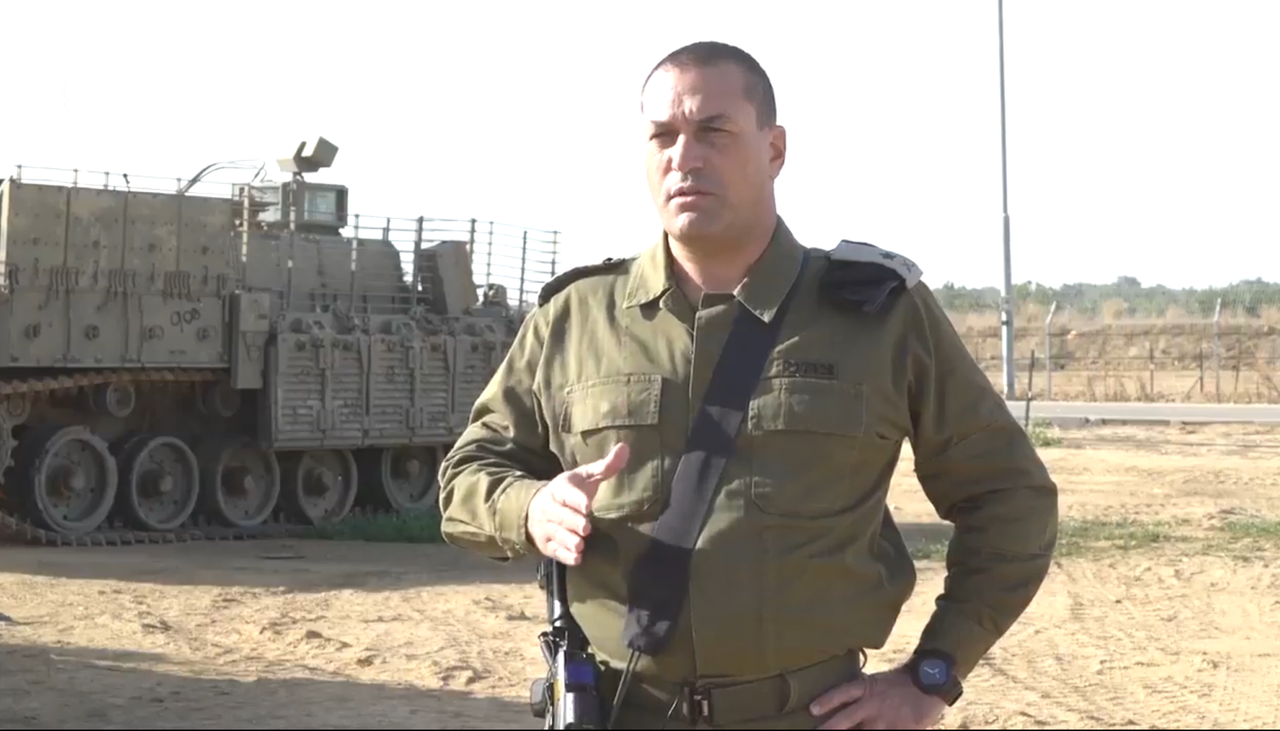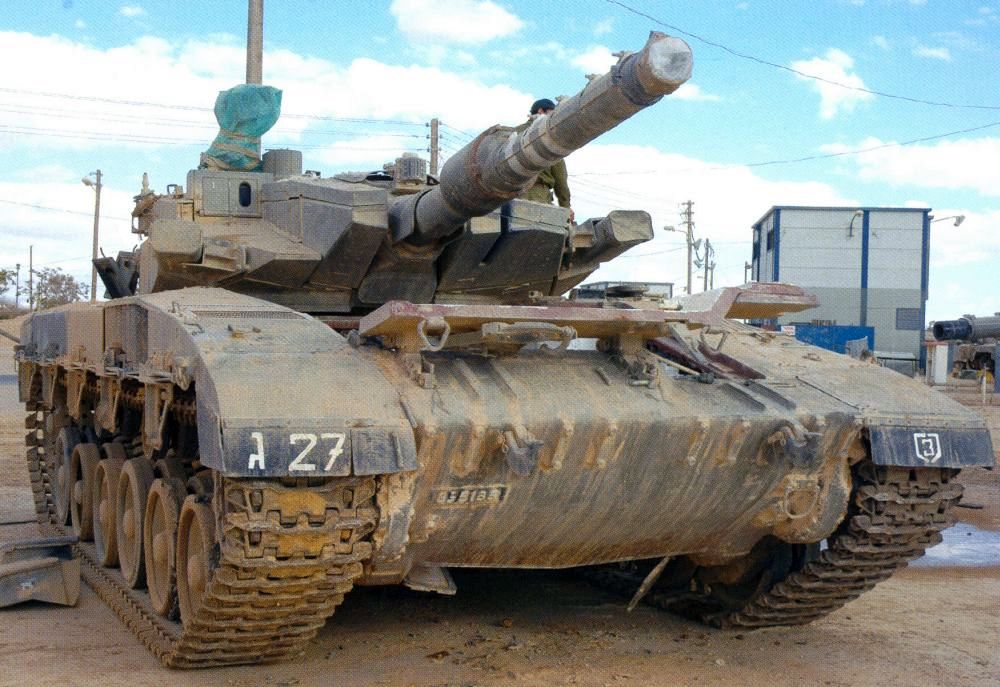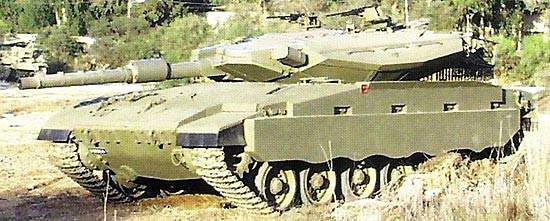-
Posts
165 -
Joined
-
Last visited
-
Days Won
2
Content Type
Profiles
Forums
Blogs
Gallery
Downloads
Events
Posts posted by Marsh
-
-
27 minutes ago, Mighty_Zuk said:
Are you talking about Michael's modeling books, going in depth into visual details for enthusiasts?
Yes, very good books in their own right, but not rich in historical detail. Still very worth buying, but not really what Toimisto is looking for.
-
Who dares summon the Marsh? Oh, Hi Zuk!
Well there is very little in English. There is a wonderful book by Moshe Givati in Hebrew about the work of Ordnance Repair and Upgrade facility 7100, from 1948-1996. Unfortunately, since I can't really understand Hebrew, all I can do is rock back and forth and lick the pictures .... If you can read Hebrew Toimisto, get this book.
In English Robert Manasherob has an excellent series of books covering the history and service of IDF tanks such as the Centurion etc. Michael Maas has an equally good series of books covering IDF armour, but they tend not to cover the historical development in as much detail, being more concerned with contemporary service. Still must buys though.
Not much else springs to mind.
Sorry
Marsh
-
I honestly don't know. I have learnt never to say never, when talking about Israeli tanks!

-
Hi,
Way back at the time of the Magach 6B Gal. However, as with most IDF armour upgrades, this particular one was done by switching over small batches of vehicles. Not all the Magachs converted to the new tracks and several different types of tracks were in service at any one time.
cheers
Marsh
-
-
-
3 hours ago, Mighty_Zuk said:
It's very much the same story with many weapon systems today. The naming became far more conservative after the end of the cold war.
Leopards literally got new names (2A1, 2A2 etc) just because of the batch numbers at the time, with minor improvements only.
The Abrams had gained more capabilities in the SEP programs than going from M1A1HA to M1A2 did.
I looked a bit into what the sponsons on the Mark 3 contain and I remembered that the Mark 4 does have fuel tanks there (though not only, obviously, there's other equipment like infantry phone etc), so it makes sense the Mark 3 made the first move (EDIT: Found the pics I was looking for, definitely has openings there for fuel). But if that's the Mark 3, then it really makes no sense. The plate which the diagram depicts is of the thickness that is in front of the engine compartment, not the driver. The driver's plate is reinforced and is double the thickness there. There's also mentioning of the Mark 4 in that book, which is the only tank in the series to have a completely flat UFP, but then its armor thickness there is more than 3 times as much, and it has the same sponson shape at the rear where the fuel tanks are.
EDIT2: Here you can see that the main plate could be argued as being 55mm thick, although it is curved thus it's not the one referred to, while the driver's plate is made up of 2 plates of similar thickness:
And here's one with up-armored front (and sides also, but that's unnecessary):
I'll never understand why MANTAK had developed such an extensive armor kit for the Mark 3, and even mounted it on the Mark 2D, but chose not to apply it to the Mark 3 even though newer variants like the recently shown Mark 3M have even further improved turret armor.
I could understand that the Mark 3 was the last one considered to be built for defensive warfare and thus didn't need the hull armor, and that the Mark 4 has much thicker armor thanks to it being more offense and mobility oriented, but it doesn't absolve them from upgrading the Mark 3s to meet the new combat perception and doctrine.
Hi,
I don't understand what you mean by the Merkava 3 was not fitted with additional, heavy applique armour kits in the same manner as the Merkava 2D. A major portion of the Merkava 3 production run were fitted with just such armour modules as the Merkava Siman 3 Daled (Mk. 3D). As well as those produced as new with the modules from the beginning, Merkava 3 Baz models were retro-fitted with the applique modules. Only a minority of the Merkava 3 fleet are left without the additional armour.
If you are talking about only hull and side-skirt armour, then that would make more sense. However, there are different styles and weights of side-skirts available, some with better protection than the ones you see routinely fitted. There is also the matter of cost. Only a small portion of the Merkava 2 fleet were up-armoured to the Merkava 2 D Batash standard. Even then, the armour configuration and other changes used for the 2D Batash was not as extensive as the projected Merkava 2 "Tafnookim " which would have been too expensive.
I could be mistaken, but I think the Merkava 3 in the bottom photo, was a developmental one used for the Merkava 4 programme, where new systems, armour modules, etc. were experimented with.
-
Hi,
It was explained to me by people in MANTAK, that the Merkava 1 was rushed into service before it was ready. The Merkava 2, if there would not have been such pressure to introduce the tank into the order of battle, would have been the first model accepted for service. The intent was that by telescoping the evolution of the Merkava and learning from combat lessons, what was in essence a developmental vehicle, could be rapidly modified into a fully fledged MBT.
-
13 hours ago, Mighty_Zuk said:
At first glance, this appears, as has already been pointed out by Kylie, the left flank of an Achzarit. If so, then it's forward of the Toga mesh armour. Yet, I am not sure. I do wonder if it is some proof of concept, ballistic test rig, rather than the heavy APC itself. I have seen something similar when the Namer was being developed.
There is another thing. I have met Tal a couple of times. He was a physically small man, as am I. The roof of an Achzarit towers well above our hight, yet on this photo it is at head hight. Something odd here.
I am looking at the image on a mobile phone not computer, but isn't that hole an exit rather than entry point?
Cheers
Marsh
-
Just looking at a very small screen image, but that does look like a Merkava 3. If so, surprised that the 188th (Barak Brigade?) moved straight from the Shot to a later Merkava model.
Cheers
Marsh
-
-
Interesting link. Thanks. Would it be OK if I put it in Tanknet? Assuming I can ever get on it again?
-
Hi LoooSerR,
After the end of the Six Day War, the IDF absorbed into service approximately 150 T-54s and T-55s as Tiran 4 and 5s. A substantial stock of other intact and damaged tanks were kept for spare parts.
After the end of the Yom Kippur war, the original intention was to replace losses by introducing two entire, new armoured divisions (Division 440 and Division 880) made up of captured and then upgraded T series tanks. along with captured BTR-50, Topaz APCs and BDRMs.
Of the 139 captured T-62s in running order 79 were in excellent condition and introduced into service as an independent brigade of Tiran 6s to be allocated to Division 440. The Tiran 6s kept their 115mm weapons. Although the IDF was impressed by its performance, the original intention was eventually to replace the 115 with the 105 mm gun because of ammunition shortages
Initially another 330 Tiran 4s and 5s were absorbed as war booty by the end of 1974. Upgrades were limited to new radios, optics and machine guns. The intent was that all the Tirans would have their gun replaced with the 105 mm , potential power-pack replacement and other profound upgrades as part of Project Samovar. Many hundreds of T-54s and T-55s in various states of repair were held as a store of spare parts.
The IDF planned to absorb another 400-500 Tirans by the end of 1976. This was never carried out, and Division 880 was not introduced with ex Soviet equipment, nor was Project Samovar carried out. This was because the US sold sufficient M48s and M60s to rebuild the Armoured corps with Western equipment. If not for this, the Israelis would have been one of the largest users of T54s and T-55s outside of the Warsaw Pact. The irony.
The numbers are accurate. A friend of mine "Camera" translated the Hebrew text to English from the second of volume of the History of the Ordnance Corps, written by the military historian Amira Shahar and offered for free download on the site of the Foundation of the Veterans of the Ordnance Corps. The Hebrew name of the volume is ‘The Ordnance Corps as a force multiplier – the history of the Ordnance Corps in the years 1967-1985’:http://himush.co.il/himush.co.il/ori...s1967-1985.pdf. The study is an excellent "warts and all" account pointing out serious shortcomings of the IDF, but also underlining just how important rapid battlefield recovery and vehicle repair was during the 1973 war.
cheers
Marsh
- Xlucine, Walter_Sobchak, Belesarius and 1 other
-
 4
4
-
Hi Serge,
I am well aware that the Namer is a heavy APC. Yet the intent for the Namer was originally for a family of vehicles, including a "Fire Support Variant". How do I know this? I was invited to attend a presentation and discussion of the Namer project, by the then head of Mantak, at the time the first Namer prototype was undergoing its firepower trials.
Lack of funds and differences of doctrine withinj the IDF scuppered these plans. I do suspect that only a proportion of Namers will carry the new turret and envisage them acting as a Fire Support Vehicle, albeit, without ATGMs.
I do understand that the nature of the enemy has changed, assuming things do not go pear shaped with Egypt or Turkey. As I stated, I do not expect ATGMs to be mounted on the vehicle.
Incidentally I do not believe the IDF has "Air Cav" at least not in the way the US invisages it.
Cheers
Marsh
-
Hi Zuk,
Normaly I would agree with you. I am not a fan of either IFVs or mounting ATGMs on an infantry carrier.
It depends how the vehicle is to be utillised though. If it is going to be used in the same manner as a the Russian BMPT-72 (unlikely) as a tank support vehicle, or as an infantry support vehicle (likely). If the former, then ATGMs would make sense.
-
Hi,
Apparently it's a 30mm Bushmaster and the vehicle as shown, is the configuration entering service.
One important question is will Spike ATGMs be an option?
Cheers
Marsh
-
Note the extra storage panniers on the upper hull flanks. Could this be a vehicle to supplant either the Puma and/or the Nagmachon/Nakpadon?
-
1 hour ago, Mighty_Zuk said:
Marsh, do you have any info to provide me on this?
What I know is it uses a torsion bar suspension, front mounted engine (but not based on the Merkava), a 120mm gun (MG251?). That's about it.
I still don't know the date of the program inception and its ending, the motives behind it, and overall envisioned capabilities on the tactical level.
Not a thing! Great find. For some reason, the hull reminds me of something. Can't place it. I wonder if it is a Frankenstein conversion of an existing AFV in IDF service, rather than a new build.
The IDF were always opposed to light tanks, which makes this beast all the more interesting.
-
1 hour ago, LoooSeR said:

Nice photo LoooSeR. It really shows the sheer size and bulk of the Namer. My avatar shows me standing in front of one of the first pre-production vehicles and it absolutely dwarves me.( I am short mind!
 )
)
-
On 16/12/2016 at 5:41 PM, Militarysta said:
I don't want to be rude but it's not in that way. In Israel there was several imigration waves from WarPac and SovietUnion - including many oficers, engeeners and others. In 1967 War the most popular pilot language was polish for exmaple. From Soviet Union there was sevral emigration waves to Israel and many many weapons project where copied or rather rebuild on some general idea taken from Soviet Union. Not funny for national pround but true.
"In 1967 War the most popular pilot language was polish for exmaple."
This is frankly laughable. There was practically no movement of Polish Jews to Israel from the 1950s to 1968. The major movement of 13,000 or so Jews who left Poland after the March 1968 political crises and a surge of antisemitism post dated the Six Day war and of the 13,000. Only 28% went to Israel and fewer stayed. (By the way, no one is allowed to serve in the IDF unless there Hebrew is reasonably fluent. You are not allowed to use a different native tongue in combat).
The Aliyah of Russian Jews to Israel is an entirely different matter. It was vast and did include a significant number of scientists, engineers and people who had military experience. Even then, it was only in the 1990s that the IDF trusted Russian immigrants to serve in sensitive areas of the military.
I am well aware that the Soviet Union developed ERA long before the Israelis. I also freely acknowledge that Soviet developments were actually better designed and more effective than the rather primitive first generation Blazer. However, having been involved in researching the origins of Blazer and having been fortunate to sit and chat with Manfred Held on two occasions, I can assure you, it was not developed by Russian emigres.
-
Hi,
The bonus book offer is US only. I live the other side of the Pond.
-
Talking of books. I have a pristine copy of my Merkava book published by Tankograd for sale. Its still shrink wrapped. I also have two copies of the book in excellent used condition which I am willing to sell. If anyone is interested, please PM me. I have to be honest guys, I will be selling them a lot cheaper than Abe's books, where they are quoted as £304 ($380), but they won't be cheap. I need the money!
Cheers
Marsh
-
On 15/02/2017 at 5:22 AM, DogDodger said:
Thanks for the tip. I've had those preordered on Amazon since June 2016, and they aren't set to come out until June 2017. The ebooks are also each $5 cheaper. Decisions decisions...

Just downloaded the two books in E book format directly from the US World of Tanks site. No problem in doing so, even though I am based in the UK. Much cheaper than Amazon UK where they wont be available until June.
-
The Merkava's belly is made up of two rather thick plates in a shallow V configuration with a space in-between. (It can also be fitted with an applique belly plate when the tactical situation determines it). The space used to hold fuel cells. On the Merkava 3 onwards, the fuel cells were replaced with a simple air-gap. Apparently, although the fuel cells in the belly did offer useful protection against penetration, there was a problem. In the case of an explosion under the tank, the liquid transmitted the shock wave to the crew compartment to a greater extent than was optimum.










Israeli AFVs
in Mechanized Warfare
Posted
Hi,
On two computers I tried, the photo is just blank. Please would you try downloading it again?
cheers
Marsh